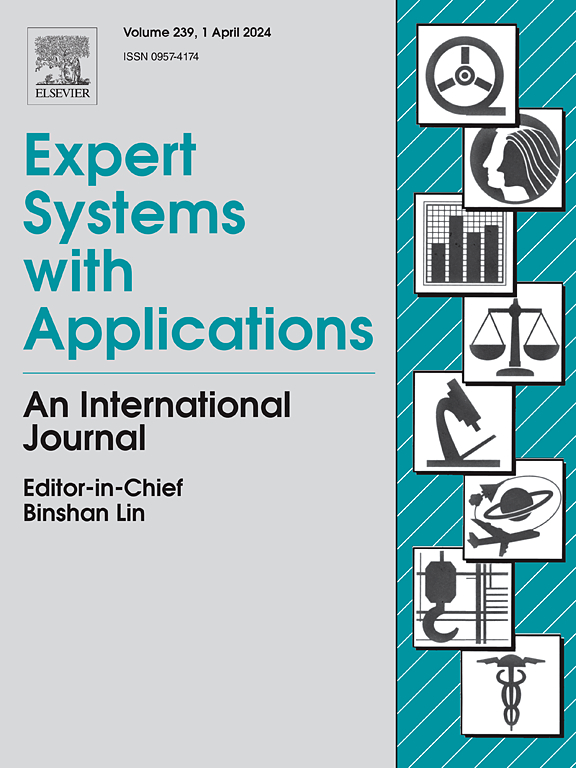利用可解释的深度神经网络模型识别与乳腺癌患者生存相关的基因调控网络
IF 7.5
1区 计算机科学
Q1 COMPUTER SCIENCE, ARTIFICIAL INTELLIGENCE
引用次数: 0
摘要
最近,人工神经网络在生物医学研究领域获得了极大关注。然而,它们在生存分析中的应用仍然面临着许多挑战。除了要设计出高精度的模型外,还必须优化能提供有生物学意义的见解的模型。考虑到这些因素,我们开发了一种深度神经网络模型--MaskedNet,用于识别诊断时表达与总生存期相关的基因和通路。我们使用 TCGA 乳腺癌转录组和临床数据对 MaskedNet 进行了训练,模型的最终输出是预测的死亡危险比对数。训练后的模型使用 SHapley Additive exPlanations(SHAP)进行解释,SHAP 是一种基于稳健数学原理的技术,它为输入特征分配重要性分数。与传统的 Cox 正比危险回归相比,MaskedNet 的准确性更高,这可以用 Harrell 的 C 指数来衡量。我们还发现,汇总多个模型运行的输出结果,可以发现与总生存率相关的多个基因和通路,包括 IFNG 和 PIK3CA 基因及其相关通路。为进一步阐明IFNG基因的作用,根据IFNG SHAP值的高低将肿瘤分为两组。IFNG SHAP值较低的肿瘤表现出较高的IFNG表达和较好的总生存率,这与肿瘤微环境中存在较多的M1巨噬细胞和活化的CD4+和CD8+T细胞有关。IFNG通路与总生存期的关系在一项独立的乳腺癌研究--NCCTG-N9831试验的曲妥珠单抗组中得到了验证。本文章由计算机程序翻译,如有差异,请以英文原文为准。
Identification of gene regulatory networks associated with breast cancer patient survival using an interpretable deep neural network model
Artificial neural networks have recently gained significant attention in biomedical research. However, their utility in survival analysis still faces many challenges. In addition to designing models for high accuracy, it is essential to optimize models that provide biologically meaningful insights. With these considerations in mind, we developed a deep neural network model, MaskedNet, to identify genes and pathways whose expression at the time of diagnosis is associated with overall survival. MaskedNet was trained using TCGA breast cancer transcriptome and clinical data, and the model’s final output was the predicted logarithm of the hazard ratio for death. The trained model was interpreted using SHapley Additive exPlanations (SHAP), a technique grounded in robust mathematical principles that assigns importance scores to input features. Compared to traditional Cox proportional hazards regression, MaskedNet had higher accuracy, as measured by Harrell’s C-index. We also found that aggregating outputs from several model runs identified multiple genes and pathways associated with overall survival, including IFNG and PIK3CA genes, along with their related pathways. To further elucidate the role of the IFNG gene, tumors were partitioned into two groups based on low and high IFNG SHAP values, respectively. Tumors with lower IFNG SHAP values exhibited higher IFNG expression and better overall survival, which were linked to more abundant presence of M1 macrophages and activated CD4+ and CD8+ T cells in the tumor microenvironment. The association of the IFNG pathway with overall survival was validated in the trastuzumab arm of the NCCTG-N9831 trial, an independent breast cancer study.
求助全文
通过发布文献求助,成功后即可免费获取论文全文。
去求助
来源期刊

Expert Systems with Applications
工程技术-工程:电子与电气
CiteScore
13.80
自引率
10.60%
发文量
2045
审稿时长
8.7 months
期刊介绍:
Expert Systems With Applications is an international journal dedicated to the exchange of information on expert and intelligent systems used globally in industry, government, and universities. The journal emphasizes original papers covering the design, development, testing, implementation, and management of these systems, offering practical guidelines. It spans various sectors such as finance, engineering, marketing, law, project management, information management, medicine, and more. The journal also welcomes papers on multi-agent systems, knowledge management, neural networks, knowledge discovery, data mining, and other related areas, excluding applications to military/defense systems.
 求助内容:
求助内容: 应助结果提醒方式:
应助结果提醒方式:


